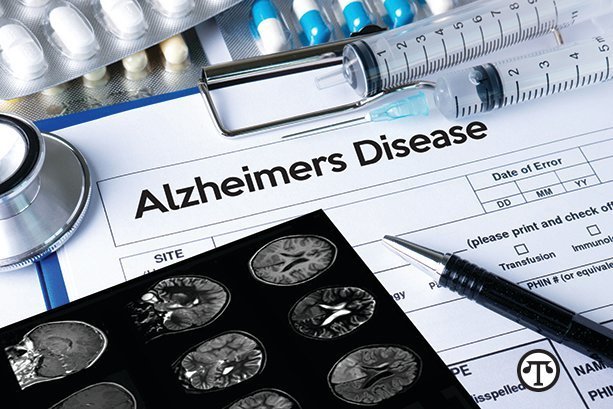SOLON & BEYOND: Uncle Jack and the revenge of Bigelow Mountain
 by Marilyn Rogers-Bull & Percy
by Marilyn Rogers-Bull & Percy
grams29@tds.net
Solon, Maine 04979
This week I have some recent news which I am going to start with. It is about the dedication of a new name for the Solon, Embden Bridge and the subject is Jotham and Emma Stevens. This is the info regarding the bridge dedication which took place at the bridge on Sunday, July 25, 2021, with the following family and friends present. Debbie Veneziano, brother Rusty (Clayton) Stevens, nieces Ashley McGowan and Breanna Conners (her daughter Denver), June Ann Giroux, my dad’s sister and her son Skip Giroux, all were the direct descendants present. Rod Hatch from Embden was instrumental in making this happen.
Lief and I also attended this wonderful occasion on that beautiful day. (If anyone reading the above can let me know of any other news about the above please let me know.
This old news is taken from a Somerset Reporter, Skowhegan, Maine, January 31, 1974 : and it is called Uncle Jack’s revenge: Bigelow Mountain’s bad medicine, by Bob Dunphy. “Last October the Land Use Regulation Commission (LURK) held hearings to procure information necessary to zone the wildlands of Maine, including the Bigelow Mountain area.
The Flagstaff Corporation presented the plan to develop an 800 acre plot at the base of Bigelow Mountain. They had owned and paid taxes on 10 percent of the land for 10 years. They had spent more than $500,000 in preliminary surveys and had built more than eight miles of road long before LURC had been created.
The proposal would have met every pollution regulation in Maine today, in an area now free from human pollution, and would have served as a proving ground for all the new ideas on waste disposal, and with a master plan to comply with all the new laws and subject to the approval of all state personnel. It would have been compact with all new buildings; not a sprawl of ‘A’ frames, trailers, converted busses, slab shanties and farm houses that now extend from the Kingfield-Carrabassett Valley town line to Eustis on the other side of the mountain.
Actually, the Bad Medicine of Bigelow Mountain started many years ago. An Abnaki Indian called “Uncle Jack” told the Secret of Horns Pond to a white woman, and so angered the Great Spirit that he not only condemned the Indian’s soul to eternal damnation, but drove out the white people and destroyed the beautiful Dead River Valley as well. Uncle Jack had always lived in the Dead River region. No one knew how old he was but some people thought that he was the Indian that put out the birch bark maps that guided Benedict Arnold’s army to Québec and drove out the moose that saved the soldiers from strarvation at Flagstaff when their supplies were washed away by the flood. If this was true, no one ever gave the old man any credit for it, because he was always looked upon with fear and suspicion. But the old fellow was a true patriot and whenever they had a Fourth of July celebration at Flagstaff, he always moved his wigwam close to town.
The tragedy happened at the last celebration when the boys from Flagstaff had stolen the old Revolutionary War cannon from Stratton and were really having a Revolutionary ball. Uncle Jack was there for the fourth and someone gave him a jug of hard cider. This really turned the old man on and when a high-stepping white woman gave him the eye, he knew that this was the sign he had been waiting for ever since the white men had killed all the Abnaki women at Old Point. The old buck lost no time in escorting her to his wigwam. After much elbow bending and Indian wrestling he fell into a deep sleep. The white woman, kind soul that she was, decided that she would remove his moccasins and mittens to make the tired old man more comfortable. She could not get the garments off but she did awaken the old Indian in her efforts and he told her how they could never be taken off by anyone but himself. He told her how he sat in his birch bark canoes in the rays of the setting sun, looked deep into the pond and saw these fish sitting upon their nests keeping their eggs warm with their soft furry bodies. And how they used their short stubby tails to fan away ice particles in the frigid water that would have frozen to the nests and lengthened the incubation period and ended the life cycle.
He said that these tiny creatures would never leave the nests to feed and, if it took too long, the poor things would starve. He said that the fish could never be taken by hook and line as they fed only upon bits of reindeer moss and other lichens that were carried by the winds from the mountain peaks and dropped into the pond, and that the Indians must wait for the right moon when the summer ice would freeze at the bottom of the pond and carry these strange creatures to the surface. He told her how there would never be too many because they grew very slowly and many times only the tiniest fish would be left in the water near the shore when huge pieces of ice would carry great numbers of the larger ones to the surface where they would die from lack of air before the ice melted enough for them to get water into their gills.
This must have been what angered the Great Spirit, because the next morning the white woman was found in a state of shock, the wigwam burned to the ground and Uncle Jack was gone.
That is about half of this very interesting story and I will be finishing it next week. Hope you enjoyed it.













 COMMUNITY COMMENTARY
COMMUNITY COMMENTARY (NAPSI)—More than 6 million people in the U.S. live with Alzheimer’s, and that number continues to increase each year. In 2021, Alzheimer’s and other dementias will cost the nation $355 billion. The Alzheimer’s Association predicts those costs will rise to $1.1 trillion by 2050.
(NAPSI)—More than 6 million people in the U.S. live with Alzheimer’s, and that number continues to increase each year. In 2021, Alzheimer’s and other dementias will cost the nation $355 billion. The Alzheimer’s Association predicts those costs will rise to $1.1 trillion by 2050.